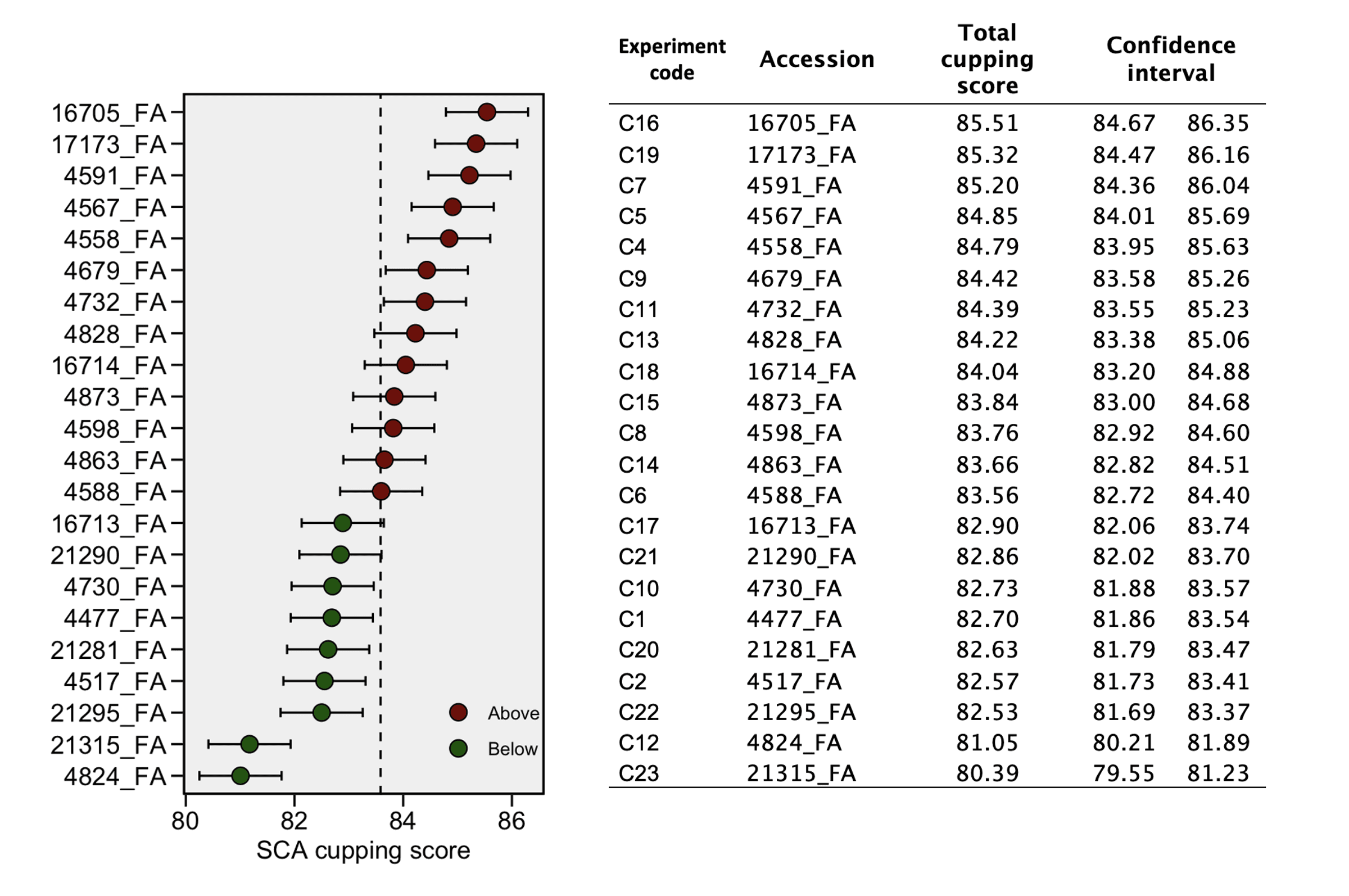Exploring the wild: cupping diverse arabica accessions
Experiment further characterizes WCR-CATIE Core Collection
Over the last year, 13 cuppers from 10 of WCR’s global community of member companies1 evaluated 23 wild arabica accessions2 from the WCR-CATIE Core Collection with the goal of characterizing their cupping qualities to inform future research and breeding activities (currently, WCR does not have plans to utilize the Core Collection accessions in breeding). In particular, this cupping trial sought to understand which accessions have the highest cup quality scores or meet current industry product needs.
These accessions comprise nearly a quarter of the subset of 100 that WCR identified as the most diverse arabica plants available in the CATIE germplasm collection through a 2017 study. The study involved genetically testing 947 individual plants of varying species all originating from the 1,000 accessions housed at the CATIE International Coffee Collection of germplasm in Costa Rica. The subset of 100 was later propagated and is currently installed for backup conservation and characterization in field trials in two locations: in El Salvador at WCR’s Research Farm and in Rwanda at the Rubona Research Station of the Rwanda Agricultural Board (RAB).
The 23 accessions involved in this cupping experiment—those that produced yields high enough to initiate a cupping trial—were harvested in 2020, wet processed, and then shipped internationally to participating cuppers mid-2021. Cuppers were instructed to prepare the roasted coffee for cupping according to their internal company sample evaluation protocol while following the Specialty Coffee Association’s (SCA) cupping protocol and water quality standards.
The results
On average, the cuppers’ scores ranged in total from 80–85.5 (note: the SCA recognizes any coffee that scores above 80 points as specialty grade) and 13 of the accessions had average total cup scores above the mean.

Figure 1. Mean cupping scores per accession.
WCR’s breeders also analyzed whether cup quality scores in these accessions had high “heritable variation,” which is a measure of whether a trait of interest is likely to be passed on to future generations in breeding programs. Breeders found moderately high heritability for cup quality in the tested accessions. This is important information for breeders to have in order to more efficiently target useful traits within a breeding program.
The trial also found a significant level of variation within cuppers’ scores and their specific preferences (in other words, not all cuppers rated the same coffees highly), suggesting that it is important to evaluate samples with a wide variety of cuppers.
We also analyzed whether the total cupping score was predicted by the presence or absence of specific flavors in the coffees. From the descriptors provided, the flavors “sweet” and “burnt” had the most positive and negative effects respectively in predicting total cupping score. In addition, the components of the SCA cupping score that had the biggest effect on total cupping score were fragrance/aroma, balance, and sweetness. Because total cupping score isn’t inherently an indication of whether or not there is market demand for a given coffee—a company might score a coffee well but still not have a place for it in their portfolio—we also asked cuppers to rate whether each coffee “meets your quality specifications for current or planned product offerings.” In the end, we found a strong positive correlation between total SCA score and market demand.
Looking forward
The data gleaned from this quality trial are not representative; they are linked to a single site within a single harvest year. WCR is in the process of analyzing data from multiple sites and harvest years to form a more robust picture of the cup quality potential and field performance of these materials. This analysis will build WCR’s understanding of the stability of cup quality, yield, and coffee leaf rust (CLR) susceptibility over different years and across varying environments with unique conditions.
It is critical to continue making progress on measuring and describing the characteristics of the materials available in the CATIE International Coffee Collection in order to support their continued preservation and future use.
1Companies represented include: Workshop Coffee, Accademia del Caffè Espresso (La Marzocco), Community Coffee, Olam Specialty Coffee, Tony’s Coffee, Counter Culture Coffee, Allegro Coffee, Intelligentsia Coffee, illycaffè, and Origin Coffee.
2Accessions are defined as distinct, uniquely identifiable samples of seeds that represent a particular plant breeding line that are maintained in storage for conservation and later use.